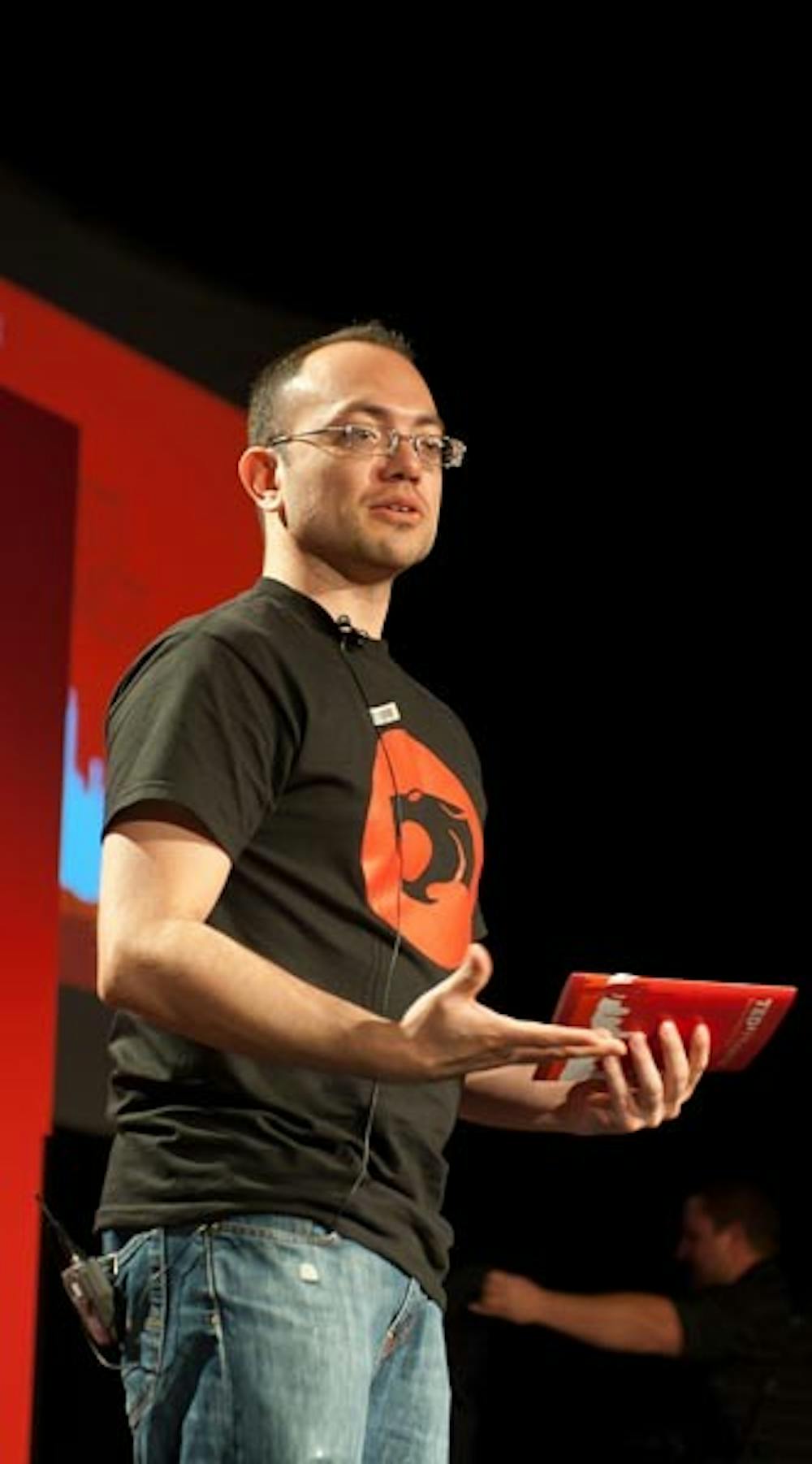Correction Added
Community leaders who believe in preserving the Navajo culture in an urban setting spoke at an event on the ASU’s Downtown campus on Saturday.
The independent TEDx, or Technology Education and Design event, was inspired by the TED Counsel, a nonprofit group that organizes speakers to encourage the spread of new ideas in all realms, including science, culture and art.
One speaker was Jolyana Begay-Bitsuie, a former Miss Navajo and a teacher’s assistant for the Mary Lou Fulton Teachers College and linguistics graduate student at ASU. Local authors, professors and business owners were also part of the event at the Walter Cronkite School of Journalism and Mass Communication.
The event was independently organized by Tomas Carrillo, a member of the Phoenix community and founder of “The Closet Entrepreneur,” a blog that promotes small businesses. There have been about 900 of these independent conferences worldwide since 2009.
Begay-Bitsuie spoke about her activism that has continued since her time as Miss Navajo in 2001 and 2002.
Whoever is selected for this title each year at Window Rock — the capital of the Navajo reservation near the Arizona-New Mexico border — serves as a representative for her people on a national and international stage and promotes the importance of the preservation of language and culture.
She said she continues to be concerned about this issue because the number of people who speak Native American languages is on a very steep decline.
“If we lose our language, we lose our culture,” Begay-Bitsuie said.
Begay-Bitsuie currently teaches beginning and intermediate Navajo courses at ASU. Navajo is currently only offered up to the 202 level, but she said the classes are always popular and the intermediate class is currently full.
Her classes do not currently have a permanent department. This semester they are part of the Mary Lou Fulton Teachers College, but they have been part of the american indian studies department and applied linguistics department.
She said in the future she would like to the see the program have a “permanent home at ASU” and be able to grow the program into a minor at the University.
Begay-Bitsuie said she hopes to make expanding the Navajo program at ASU part of her dissertation.
It may take five semesters or more to finish her degree, she said, because during the day she works as a third-grade teacher at the Gila Crossing Community School in the southwest Valley.
She also works to preserve her language by teaching singing classes at the Phoenix Indian Center on North Central Avenue and West Campbell Avenue.
The Phoenix Indian Center provides both language and cultural classes for children and adults, who are part of the urban Navajo population. The staff at the center prepares members of the Navajo population to take their GED test.
Petra Reyes said she started taking classes at the center with Begay-Bitsuie in 2007 with her two daughters who are now 15 and 12.
She said she is originally from Ganado, a town on the Navajo Reservation, 30 miles southwest of Window Rock. But growing up she moved around and never spent much time on the reservation learning about her traditional culture. As she got older, she became more interested.
“I became more aware I needed to reconnect,” Reyes said.
She said learning more about her culture gave her a stronger sense of her identity.
Garry Sanden, an artist from Phoenix, said she was impressed with the former Miss Navajo.
“She was so poised and wonderful,” Sanden said.
She was also interested by the process young women undergo to be selected for Miss Navajo. This includes being questioned in Navajo and English on their plans to spread awareness about preservation of culture and language and on completing traditional tasks like slaughtering a sheep.
“I think it’s really important they are holding them to their traditions,” Sanden said.
Pamela Slim, the author of “Escape from Cubicle Nation” and a speaker at the event, said she thought the nation needed to encourage an appreciation of meaningful culture in the younger generation rather than pursuing jobs in corporate America.
“We need to stop telling our young people to spend 40 years of their time creating spreadsheets that have no meaning,” Slim said.
She said she was married to a member of the Navajo Nation and together they encourage their children to embrace the duality of their culture and to learn both English and Navajo.
Slim said her stepson Jeff Slim’s public murals in Arizona demonstrated to her the positive impact young people can have on their community.
Last spring Jeff Slim and his friend Averian Chee worked on the mural in Room 220 of Discovery Hall at ASU’s Tempe campus.
Chee said it is important for them to use vibrant colors to paint the lighter side of things rather than focusing on the negative alcohol and drug abuse that is a problem in their culture.
The mural in Discovery Hall was a compilation landscape of Arizona by four different artists including Slim and Chee.
They have also taught mural classes to people on reservations.
“We give them the opportunity to do it themselves,” Chee said.
Other speakers at the event ranged from advocates for health to local business owners.
Helene Neville, a nurse from Phoenix and the author of “Nurses in Shape — The Right Dose,” spoke about how she ran across the U.S. from California to Florida to raise awareness about healthy lifestyles.
Jay Rogers, the co-founder of Local Motors, spoke about incorporating the ideas of the public into the design of the cars and opening up the car industry to create cars for a niche audience.
Reach the reporter at mary.shinn@asu.edu





